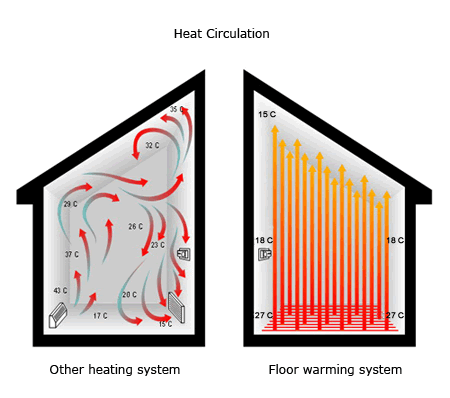Check out our latest news as well as finding useful tips and resources.

Electric radiant floor heating has many benefits when compared to forced air systems, convection radiators or reverse cycle air conditioning. The manner in which warm air circulates through a room determines how effective a specific heating system is. If all the heat is going to the ceiling then you are losing a lot of the effect of the heater, and require higher output temperatures to feel the effects. Obviously, this is not very energy efficient. With Coldbuster’s radiant floor heating systems you can achieve comfortable warmth as part of a cost-effective, energy efficient solution.
A radiant floor heating system is invisible, with no grills or panels. It is extremely safe as there is no exposed heat source to touch or get burnt from. The system evenly spreads heat across the floor area, and as it rises it provides an even, comfortable warmth to the room. Because of this, radiant floor heaters do not need to produce as much total heat to create the desired room temperature. There are also no dust or allergens blown around the room, as there are in forced air systems – particularly useful for allergy or asthma sufferers.
Coldbuster’s radiant floor heating systems keep heat in the right area – heating people in the room, not the ceiling. A heat that falls from ceiling-height is normally cold by the time it reaches the floor, a flaw in systems with less even heat distribution. Keeping your feet warm saves energy and provides the ultimate in comfort. Warm feet will spread that heat and good feeling to the whole body. You don’t get that stuffy head warmth and cold feet sensation with Coldbuster radiant floor heaters, as they evenly warm the area from the ground up.
When you buy a Coldbuster Radiant Floor Heating kit you get our complete support. You can ring us during office hours and we will answer any of your questions and help you install your radiant heater. You can also look at our Learning Centre for videos, brochures and guides. Don’t hesitate to call us if you need pre-sale assistance. No question is a stupid one so ask away!
The simplest way to get the right product and the right size of product is to Get A Free Quote
For more information see our Measuring Up for Floor Heating Guide